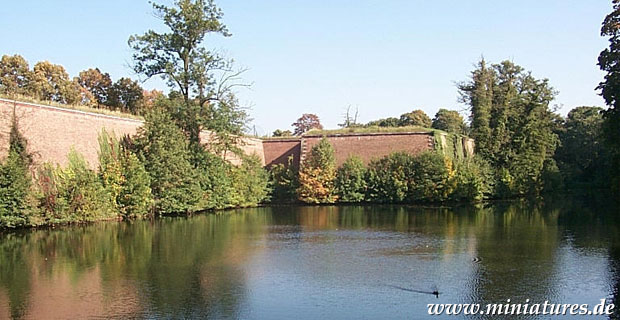Bastion

The bastion is a sort of large redan c f i, (fig. 12) of which about ⅔ of the face is broken off, in order to obtain the flanks c d, g h. The angles of the flanks g h i, are usually made obtuse, (about 100 degrees,) the flanked angle should be more than 60 degrees.
Bastions for a long while were made with orillons, but these have not been employed since the introduction of large half-moons, that cover the shoulders of the bastions, and the flanks in consequence in a sufficient manner. The orillon consisted in the prolongation e, m, o, p, (fig. 46, 47) of the face, and its principal object was to cover the artillery placed on the re-entering part of the flank. The orillons prevented the besieger from counter-battering this artillery, so that it served to fire upon the breach at the moment of assault, but, on the other hand, they reduced the value of the flank in other respects, to little or nothing, although the most important part of the fortification; for it is by its fire alone that the establishment of the enemy at the salient angle, opposite the bastion, can be opposed; the battery he may have established there overthrown; or effectual opposition made to the passage of the ditch.
The earlier engineers constructed the flanks with casemates, to multiply their fire; they, afterwards, abandoned this method, probably to avoid the inconvenience of a suffocating smoke. In order to preserve the same quantity of fire for the defence of the ditch, and even to increase it, low flanks, o p, (fig. 48) were made two or three stories high, protected by the orillon against an enfilading fire; but since the increased use of bombs, the artillery in them is quickly dismounted, and being surrounded by revetments of masonry, they are very dangerous to occupy.
Source: Lallemand, Henri Dominique: A Treatise on Artillery (New York 1820)